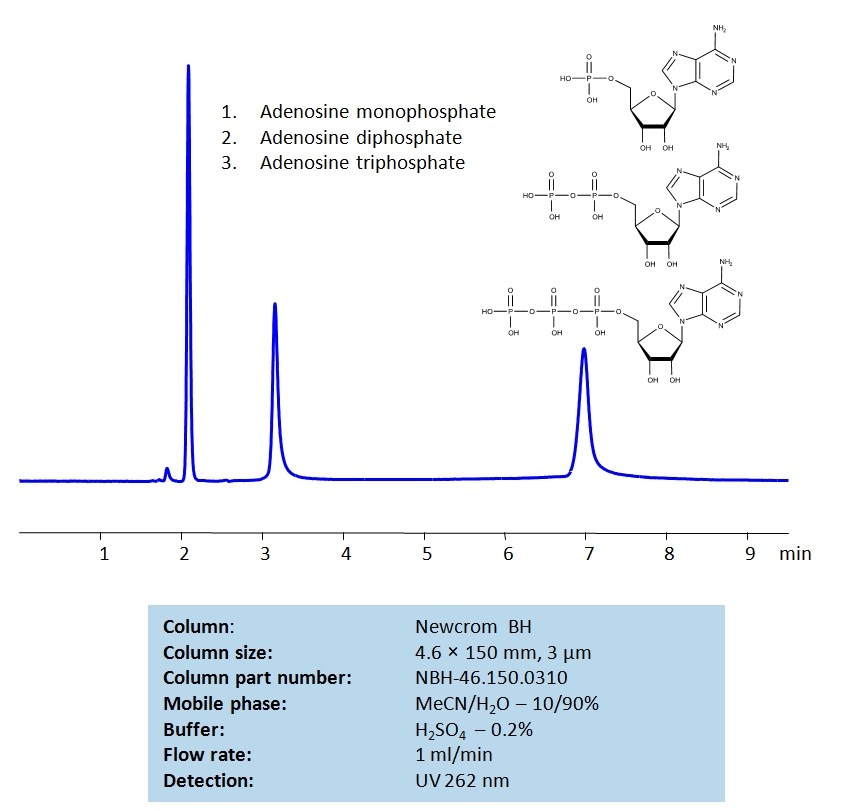HPLC Method for Adenosine Monophosphate, Adenosine Diphosphate, Adenosine Triphosphate on Newcrom BH by SIELC Technologies
High Performance Liquid Chromatography (HPLC) Method for Analysis of Adenosine Monophosphate, Adenosine Diphosphate, Adenosine Triphosphate
Adenosine Triphosphate (ATP) is a nucleotide with the chemical formula C10H16N5O13P3. It is a primary energy carrier of the cell and is crucial to cellular energy metabolism. ATP is generated in the mitochondria and is used in numerous various cellular processes. It releases energy when a phosphate linkage breaks from it, creating adenosine diphosphate.
Adenosine Diphosphate (ADP), also known as adenosine pyrophosphate, is a compound with the formula C10H15N5O10P2. It is a precursor in the synthesis of DNA and RNA. Medications that block ADP receptors on platelets prevent blood clots in conditions like heart attacks and strokes.
Adenosine Monophosphate (AMP) is a nucleotide with the chemical formula C10H14N5O7P. Due to being a byproduct of ATP and ADP, it can be reused by the body for energy at higher forms. AMP can be converted into cyclic adenosine monophosphate (cAMP) to become a second messenger in the body, relaying signals between cells.
Using a Newcrom BH mixed-mode column and a mobile phase consisting of water and acetonitrile with a sulfuric acid (H2SO4) buffer, adenosine mono-, di- and triphosphate can be separated, measured, and analyzed. This method can UV detect this family of compounds at 262 nm with very high resolution.
| Column | Newcrom BH, 4.6 x 150 mm, 3 µm, 100 A, dual ended |
| Mobile Phase | MeCN/H2O – 10/90% |
| Buffer | H2SO4 – 0.2% |
| Flow Rate | 1.0 ml/min |
| Detection | UV 262nm |
| Class of Compounds | Acid, Hydrophilic |
| Analyzing Compounds | Adenosine Monophosphate, Adenosine Diphosphate, Adenosine Triphosphate |
Application Column
Newcrom BH
Column Diameter: 4.6 mm
Column Length: 150 mm
Particle Size: 3 µm
Pore Size: 100 A
Column options: dual ended
Adenosine Monophosphate
Adenosine Triphosphate






